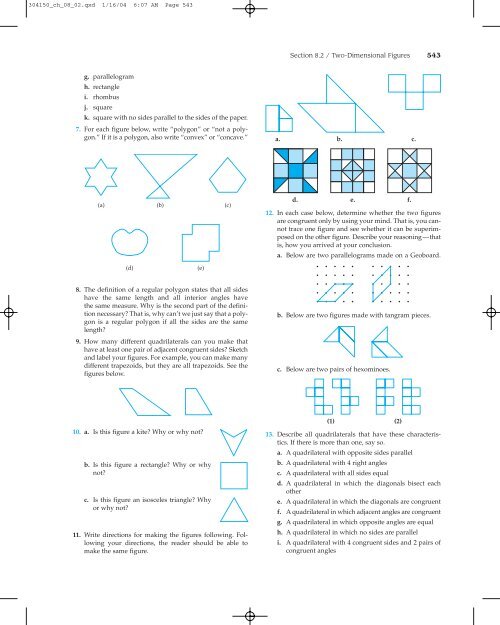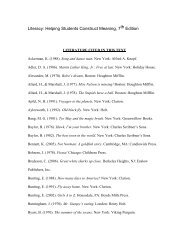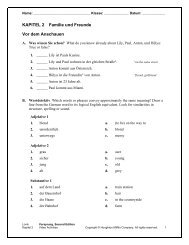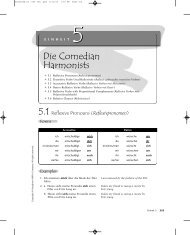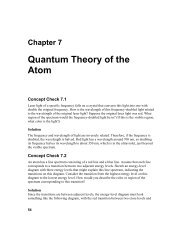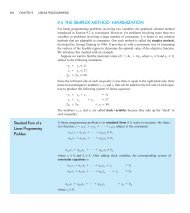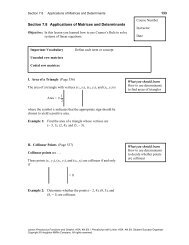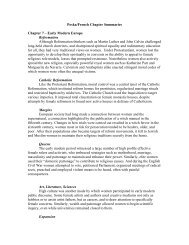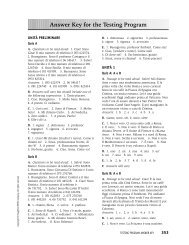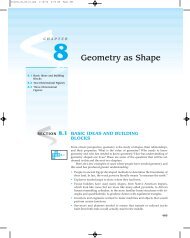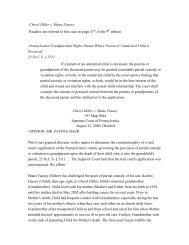SECTION 8.2 TWO-DIMENSIONAL FIGURES - Cengage Learning
SECTION 8.2 TWO-DIMENSIONAL FIGURES - Cengage Learning
SECTION 8.2 TWO-DIMENSIONAL FIGURES - Cengage Learning
You also want an ePaper? Increase the reach of your titles
YUMPU automatically turns print PDFs into web optimized ePapers that Google loves.
304150_ch_08_02.qxd 1/16/04 6:07 AM Page 543<br />
g. parallelogram<br />
h. rectangle<br />
i. rhombus<br />
j. square<br />
k. square with no sides parallel to the sides of the paper.<br />
7. For each figure below, write “polygon” or “not a polygon.”<br />
If it is a polygon, also write “convex” or “concave.”<br />
(a) (b) (c)<br />
(d) (e)<br />
8. The definition of a regular polygon states that all sides<br />
have the same length and all interior angles have<br />
the same measure. Why is the second part of the definition<br />
necessary? That is, why can’t we just say that a polygon<br />
is a regular polygon if all the sides are the same<br />
length?<br />
9. How many different quadrilaterals can you make that<br />
have at least one pair of adjacent congruent sides? Sketch<br />
and label your figures. For example, you can make many<br />
different trapezoids, but they are all trapezoids. See the<br />
figures below.<br />
10. a. Is this figure a kite? Why or why not?<br />
b. Is this figure a rectangle? Why or why<br />
not?<br />
c. Is this figure an isosceles triangle? Why<br />
or why not?<br />
11. Write directions for making the figures following. Following<br />
your directions, the reader should be able to<br />
make the same figure.<br />
Section <strong>8.2</strong> / Two-Dimensional Figures 543<br />
a. b. c.<br />
d. e. f.<br />
12. In each case below, determine whether the two figures<br />
are congruent only by using your mind. That is, you cannot<br />
trace one figure and see whether it can be superimposed<br />
on the other figure. Describe your reasoning—that<br />
is, how you arrived at your conclusion.<br />
a. Below are two parallelograms made on a Geoboard.<br />
b. Below are two figures made with tangram pieces.<br />
c. Below are two pairs of hexominoes.<br />
(1) (2)<br />
13. Describe all quadrilaterals that have these characteristics.<br />
If there is more than one, say so.<br />
a. A quadrilateral with opposite sides parallel<br />
b. A quadrilateral with 4 right angles<br />
c. A quadrilateral with all sides equal<br />
d. A quadrilateral in which the diagonals bisect each<br />
other<br />
e. A quadrilateral in which the diagonals are congruent<br />
f. A quadrilateral in which adjacent angles are congruent<br />
g. A quadrilateral in which opposite angles are equal<br />
h. A quadrilateral in which no sides are parallel<br />
i. A quadrilateral with 4 congruent sides and 2 pairs of<br />
congruent angles


